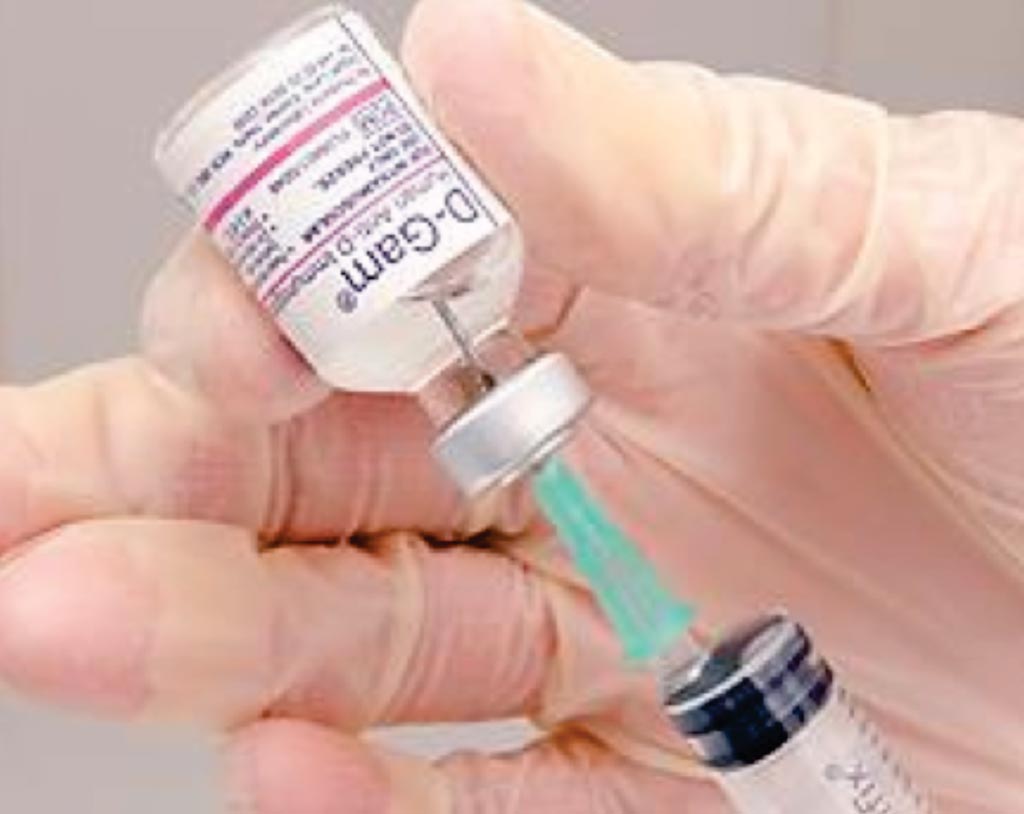NIV Test Developed for Fetal Rhesus Factor
By LabMedica International staff writers
Posted on 30 May 2018
If the blood of a pregnant woman is rhesus-negative (Rh-negative) and the blood of the fetus is rhesus-positive (Rh-positive), the woman may develop antibodies, which can cause severe harm to subsequent children in particular.Posted on 30 May 2018
A test has now become available to determine the fetal Rhesus factor already before birth. This is a non-invasive procedure, in which the fetus is not touched. Instead, the test analyses so-called cell-free fetal DNA circulating in the maternal plasma.

Image: Administration of anti-D immunoglobulin is a routine occurrence in midwifery practice and has had a significant impact on the outcomes for babies previously at risk of hemolytic disease of the fetus and newborn (Photo courtesy of The Royal College of Midwives).
All Rh-negative pregnant women in Germany currently receive a standard dose of anti-D immunoglobulin. These antibodies are used to prevent sensitization by catching erythrocytes that reach the mother's bloodstream from the fetal bloodstream already before birth. Human anti-D immunoglobulin from sensitized donors is used for this prophylaxis. After birth, the infant's Rhesus factor is determined using a blood sample of the infant (postnatal testing). If the blood of the newborn is Rh-positive, the mother receives another anti-D prophylaxis.
The German Institute for Quality and Efficiency in Health Care (IQWiG, Cologne, Germany) has now examined whether the management of prophylaxis based on a new test has advantages or disadvantages for the children or for the expectant mothers. The final results are now available. According to the findings, there are no studies to answer this question. The reliability of the new test is as high as the reliability of the conventional test used after birth, however. In principle, this allows limiting prenatal anti-D prophylaxis only to those Rh-negative pregnant women whose fetus is Rh-positive according to the prenatal test. Currently, about 15 % of all pregnant women receive the prophylaxis, corresponding to about 110,000 pregnant women per year. Implementing the new test could reduce this number to about 60,000.
The team wanted to know whether the introduction of the new test can have health advantages or disadvantages for children or mothers, e.g. increasing the occurrence of hemolytic anemia or decreasing the occurrence of side effects of the prophylaxis. However, there are studies that provide information on how reliable the prenatal test is in determining the child's Rhesus factor. The reliability is comparatively high, which is referred to as "high diagnostic accuracy": The test correctly identifies 99.9% of all Rh-positive fetuses (sensitivity) and 99.1% of all Rh-negative fetuses (specificity). This means that 0.1% of pregnant women who would require anti-D prophylaxis before birth would not receive this prophylaxis if this decision was based on the test result. Hence, the prenatal test is as reliable as testing after birth.
The authors of the report stated that if the prenatal test was to replace the postnatal test, this would increase neither the rate of prophylaxis that is falsely withheld nor the rate of hemolytic anemia to a measurable extent. This is because both tests are equivalent. It is recommended, however, to evaluate the procedure first and particularly to test how high the sensitivity of the new prenatal test actually is under the health care conditions in Germany. The final report was issued on May 15, 2018.
Related Links:
German Institute for Quality and Efficiency in Health Care













